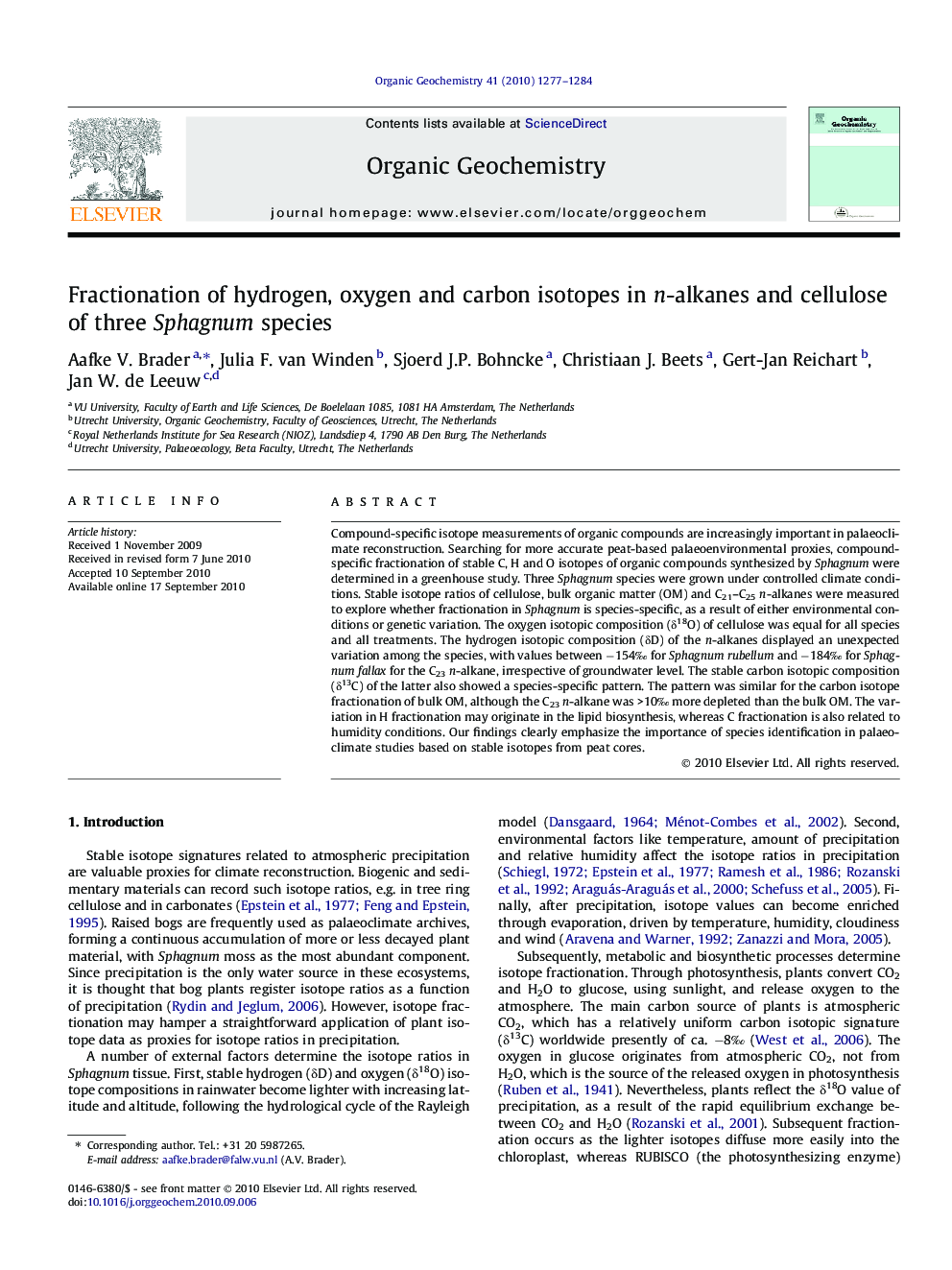| Article ID | Journal | Published Year | Pages | File Type |
|---|---|---|---|---|
| 5162563 | Organic Geochemistry | 2010 | 8 Pages |
Abstract
Compound-specific isotope measurements of organic compounds are increasingly important in palaeoclimate reconstruction. Searching for more accurate peat-based palaeoenvironmental proxies, compound-specific fractionation of stable C, H and O isotopes of organic compounds synthesized by Sphagnum were determined in a greenhouse study. Three Sphagnum species were grown under controlled climate conditions. Stable isotope ratios of cellulose, bulk organic matter (OM) and C21-C25n-alkanes were measured to explore whether fractionation in Sphagnum is species-specific, as a result of either environmental conditions or genetic variation. The oxygen isotopic composition (δ18O) of cellulose was equal for all species and all treatments. The hydrogen isotopic composition (δD) of the n-alkanes displayed an unexpected variation among the species, with values between â154â° for Sphagnum rubellum and â184â° for Sphagnum fallax for the C23n-alkane, irrespective of groundwater level. The stable carbon isotopic composition (δ13C) of the latter also showed a species-specific pattern. The pattern was similar for the carbon isotope fractionation of bulk OM, although the C23n-alkane was >10â° more depleted than the bulk OM. The variation in H fractionation may originate in the lipid biosynthesis, whereas C fractionation is also related to humidity conditions. Our findings clearly emphasize the importance of species identification in palaeoclimate studies based on stable isotopes from peat cores.
Related Topics
Physical Sciences and Engineering
Chemistry
Organic Chemistry
Authors
Aafke V. Brader, Julia F. van Winden, Sjoerd J.P. Bohncke, Christiaan J. Beets, Gert-Jan Reichart, Jan W. de Leeuw,
